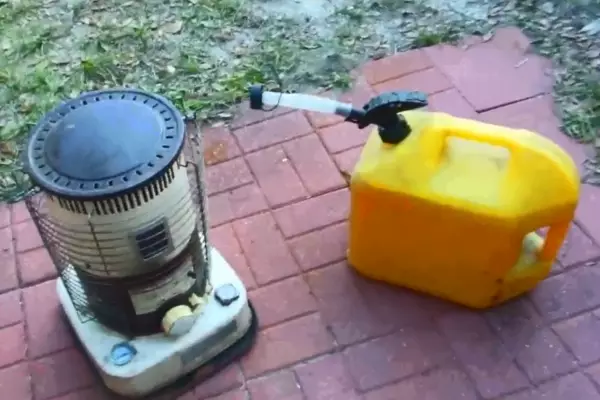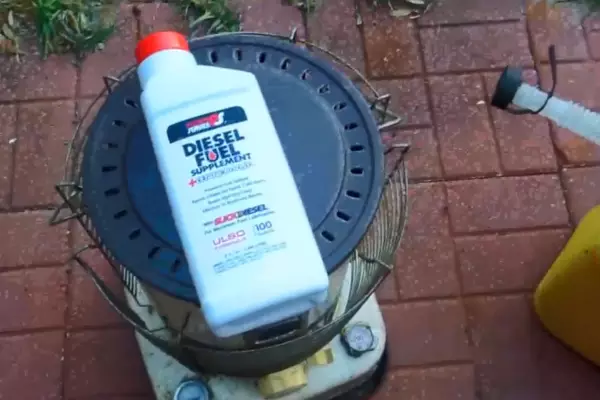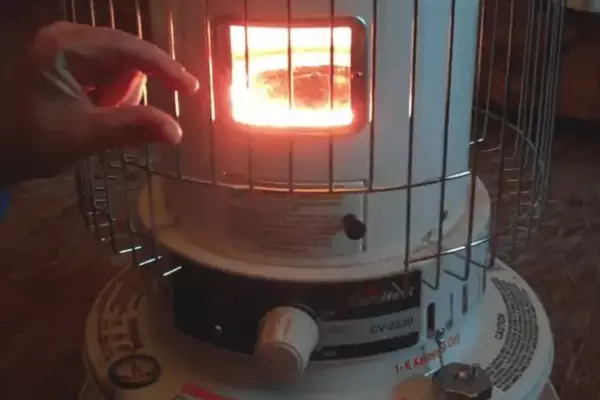Kerosene heaters are a common sight in many homes, providing warmth and comfort during chilly winters. Fueling these heaters is typically done with kerosene, hence their name. However, the question that pops up frequently is about the possibility of using diesel in a kerosene heater.
Yes, you can use diesel in a kerosene heater. But before you start pouring diesel into your heater, it’s important to know the implications. Diesel and kerosene are similar but not identical fuels, and their differences might affect the performance and lifespan of your heater.
It’s not just about whether a heater will function with diesel. There are other considerations like safety, environmental impact, and performance that should also be taken into account. Let’s explore this topic in depth.
Contents
The Science Behind Heaters
Heaters are an integral part of homes, offices, and industrial spaces, ensuring a warm and comfortable environment. Let’s take a closer look at how these devices function and the essential role of fuel.
Heat Generation Process
In heaters, the science of thermodynamics comes into play. Here’s a step-by-step guide:
- Fuel Combustion: The heater burns the fuel, which in our case could be either kerosene or diesel. The combustion process involves the reaction of the fuel with oxygen, releasing heat.
- Heat Transfer: This generated heat is then transferred to the surrounding environment. This transfer occurs via radiation, conduction, or convection.
- Regulation: Most heaters come with a thermostat to regulate the heat output, ensuring a constant temperature.

Role of Fuel in Heaters
Fuel acts as the primary source of heat in heaters. However, the choice of fuel can influence the operation and efficiency of the heater in several ways:
- Combustion Efficiency: Different fuels burn at varying rates and temperatures, influencing how much heat is generated.
- Fuel Economy: Fuels with higher energy content can provide more heat per unit, enhancing the heater’s fuel economy.
- Maintenance Needs: Some fuels may lead to more soot or residue, requiring more frequent cleaning and maintenance.
Kerosene as Heater Fuel
Kerosene has been a go-to choice for fuel in heaters for several years. Here’s why:
Attributes of Kerosene
Kerosene is a light petroleum product with several characteristics that make it suitable for heaters:
- Low Viscosity: It flows easily, making it simpler for the wick to absorb and the heater to burn.
- High Energy Content: Kerosene contains a significant amount of energy, translating to ample heat output.
- Ease of Ignition: Kerosene ignites at a lower temperature, enabling the heater to start quickly.
Advantages of Kerosene Usage
Using kerosene in heaters comes with several benefits:
- Consistent Heat: Kerosene burns steadily, providing a constant and reliable source of heat.
- Safety: Compared to other fuels, kerosene has a higher flash point, making it safer to store and use.
- Long Shelf Life: If stored properly, kerosene can last for a long time without losing its quality.
Diesel as a Fuel
Diesel, another petroleum product, is often considered as an alternative fuel for heaters. But how well does it fare?
Overview of Diesel
Diesel, used widely in engines, has distinct characteristics:
- High Density: Diesel is denser than kerosene, meaning it packs more energy in the same volume.
- High Energy Content: The higher energy content means that, theoretically, diesel can provide more heat.
- Lower Volatility: Diesel evaporates slower than kerosene, which might affect the ignition and burning process.

Attributes that Influence Use in Heaters
However, some characteristics of diesel can pose challenges in heaters:
- Higher Viscosity: The thicker diesel can clog the wick, impairing the heater’s operation.
- Lower Volatility: Slower evaporation could lead to inefficient combustion, potentially producing soot or harmful emissions.
Comparing Diesel and Kerosene
Kerosene and diesel are similar, but differences in their properties can impact how well they perform in heaters.
Physical and Chemical Differences
- Volatility: Kerosene evaporates more readily than diesel, aiding better and quicker ignition.
- Viscosity: Diesel is thicker, which might interfere with the absorption by the wick and subsequent combustion.
- Energy Content: Diesel has more energy content than kerosene, which could translate to more heat output. However, the lower volatility and higher viscosity could reduce combustion efficiency, negating this advantage.
Comparative Analysis on Performance
Using diesel instead of kerosene can affect your heater’s operation:
- Efficiency: Despite its higher energy content, diesel might not necessarily result in better heating due to its lower volatility and higher viscosity.
- Maintenance: Diesel might lead to more soot, necessitating frequent cleaning and maintenance.
- Lifespan: Regular use of diesel might wear out the heater faster due to clogging and soot buildup.
Impact of Using Diesel in Kerosene Heater
Swapping diesel for kerosene in heaters is a practice that’s often explored due to diesel’s wide availability and sometimes lower price. But what happens when you use diesel instead of kerosene in your heater? Let’s delve into the effects it can have on the heater’s performance, longevity, and maintenance.
Effects on Performance
Fuel has a significant role in the functioning of heaters, and using a fuel different from the recommended one can alter the heater’s performance. Here’s how diesel could affect a kerosene heater’s operation:
- Ignition Difficulties: Due to its lower volatility compared to kerosene, diesel can make it more challenging to start the heater. You might need to apply more heat to ignite the diesel, which might be inconvenient in some circumstances.
- Inconsistent Heating: The higher viscosity of diesel may lead to uneven wick saturation, resulting in irregular burning and inconsistent heat output. You might notice that the heater does not heat your space as evenly or consistently as it does with kerosene.
- Lower Efficiency: The combination of lower volatility and higher viscosity may lower the overall combustion efficiency of the heater. This inefficiency might negate the higher energy content of diesel, leading to similar or potentially lower heat output compared to kerosene.

Impact on Longevity
The use of diesel instead of kerosene can also have long-term effects on your heater. Here are the potential impacts on the heater’s lifespan:
- Wick Clogging: Diesel’s higher viscosity could cause the wick to clog more frequently. Over time, this could lead to deterioration of the wick, potentially shortening its useful life and leading to more frequent replacements.
- Component Wear: If diesel is not burned efficiently, it might lead to soot buildup on the heater’s components. Over time, this soot can wear down these parts, possibly leading to more frequent repairs or a shorter lifespan for the heater.
Maintenance Requirements
Maintenance is crucial for the efficient operation and longevity of heaters. Using diesel instead of kerosene might affect these maintenance needs:
- Cleaning: As diesel might produce more soot, your heater may require more frequent cleaning to remove this residue. This increased need for cleaning can add to your heater’s maintenance demands.
- Wick Replacement: If the wick clogs or deteriorates faster due to the use of diesel, you might need to replace it more often. This replacement adds to your heater’s maintenance costs and the effort required to keep it running efficiently.
Safety Aspects of Using Diesel
Safety should always be the top priority when operating heaters. Let’s discuss how using diesel in a kerosene heater can influence safety aspects:
- Risk of Unburned Fuel: Inefficient combustion could lead to unburned diesel in the heater. If this diesel is heated to its flash point, it could ignite suddenly, posing a fire hazard.
- Increased Emissions: Burning diesel can produce more emissions compared to kerosene. These emissions can be harmful if inhaled, particularly in confined spaces without proper ventilation.
- Risk of Spillage: Diesel’s higher viscosity might make it harder to handle, increasing the chance of spillage during refueling, which could lead to fire hazards or environmental pollution.
Therefore, using diesel in a kerosene heater should be approached with caution, considering these potential safety issues.
Practical Tips and Recommendations on Diesel Use
What do experts have to say about using diesel in a kerosene heater? Here’s a summary of their views:
- Consult Manufacturer: Always refer to your heater’s manual or consult the manufacturer before using an alternative fuel. Most manufacturers explicitly recommend the type of fuel to be used for optimum performance and safety.
- Possible with Precautions: Some experts suggest that using diesel could be possible but advise taking precautions like using deodorized or treated diesel, ensuring proper ventilation, and regular cleaning to mitigate some of the issues.
- Prioritize Safety: Most experts emphasize that safety should not be compromised for the sake of convenience or cost-saving. If there is any doubt about the safety or effectiveness of using diesel, it’s better to stick to kerosene.
Frequently Asked Questions
Can diesel damage my kerosene heater?
Long-term use of diesel can potentially damage your heater due to increased soot and carbon buildup. Regular maintenance and cleaning can mitigate some of these effects.
Is it safe to use diesel in my home?
While it’s possible to use diesel, it’s not the safest choice due to increased emissions. Proper ventilation and use of carbon monoxide detectors can help ensure safety.
Is diesel more efficient than kerosene in a heater?
While diesel has higher energy content, it may not necessarily be more efficient. The lower volatility and higher viscosity can lead to incomplete combustion and higher maintenance requirements.
Conclusion
Substituting kerosene with diesel in your heater isn’t a straightforward decision. It involves considering aspects like performance, safety, health, and environmental impact.
Though diesel might provide more heat, it could also lead to higher emissions and more maintenance needs. So, it’s a trade-off that needs careful consideration.
As a final note, while it’s possible to use diesel in a kerosene heater, ensure you’re taking the necessary precautions and making informed decisions based on all the factors involved.

